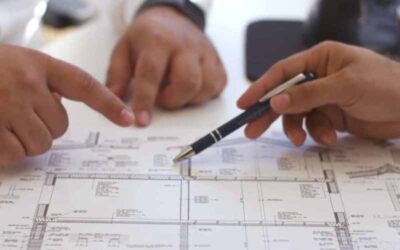In London, many internal renovation projects in a flat can be carried out without needing planning permission, as they fall under permitted development rights. However, these rights can be limited for flats compared to houses, and external or structural changes often require permission. Below are common renovation projects that generally do not require planning permission:
1. Internal Layout Changes
You can typically make changes to the internal layout of your flat without planning permission, provided they don’t affect the external appearance of the building or its structural integrity. Examples include:
- Reconfiguring rooms: Moving non-load-bearing walls to create new rooms or adjust the size of existing rooms.
- Creating open-plan spaces: Removing internal walls (as long as they aren’t load-bearing) to create larger, open spaces.
However, significant structural changes, like removing load-bearing walls or altering the layout in ways that affect other units, may require building control approval but not necessarily planning permission.
2. Updating Kitchens and Bathrooms
Renovating or upgrading your kitchen or bathroom does not require planning permission as long as the work is internal. This can include:
- Replacing fixtures and appliances.
- Reconfiguring layouts within the space.
Be mindful, though, that if plumbing needs to be rerouted or if significant structural alterations are involved, you may need Building Regulations approval.
3. Decorative and Cosmetic Changes
Cosmetic changes to your flat’s interior generally do not require planning permission. This includes:
- Painting and decorating.
- Installing new flooring.
- Replacing light fixtures or adding new lighting.
These types of changes do not affect the building’s structure or external appearance, so no permission is needed.
4. Replacing Internal Doors
Changing or upgrading internal doors does not require planning permission. You can:
- Replace old doors with new ones.
- Change the style or material of the doors to match your renovation’s aesthetic.
5. Fitted Furniture and Storage
You can install or upgrade fitted furniture such as built-in wardrobes, bookshelves, or storage solutions without planning permission, as these changes are internal and do not impact the building’s structure.
6. Flooring Changes
Changing the flooring of your flat does not require planning permission. This could include:
- Installing new carpets, hardwood, or laminate flooring.
- Adding underfloor heating, provided it doesn’t involve significant structural changes (Building Regulations might apply for heating systems, though).
7. Electrical and Plumbing Upgrades
Upgrading electrical systems, installing new lighting, or upgrading plumbing generally doesn’t require planning permission as long as:
- The work remains internal.
- It complies with Building Regulations for safety and energy efficiency.
8. Windows (Replacing Like-for-Like)
In most cases, if you are simply replacing windows with new ones of the same size and style, you will not need planning permission. However, if your flat is in a listed building or conservation area, different rules may apply.
For standard replacements, ensure that the new windows meet Building Regulations for energy efficiency (Approved Document L).
9. Soundproofing
Internal soundproofing work, such as adding insulation or soundproofing panels to walls and floors, generally doesn’t require planning permission. This can be important in shared buildings like flats but is an internal modification that doesn’t affect the external appearance.
10. Installing New Heating Systems
Installing or upgrading heating systems, such as replacing radiators or installing modern central heating systems, typically doesn’t require planning permission. However, Building Regulations may apply to ensure safety and energy efficiency compliance.
11. Replacing External Doors (Like-for-Like)
Like window replacements, replacing external doors on a like-for-like basis (with no changes to size, style, or material) usually doesn’t require planning permission. In listed buildings or conservation areas, restrictions may apply.
12. Non-Structural Repairs
General repairs or maintenance, such as:
- Repainting or re-rendering walls (internally).
- Replacing internal plasterwork.
These are typically considered minor works and do not require planning permission, though some repairs might need approval in listed buildings.
Important Considerations:
- Listed Buildings: If your flat is within a listed building, you will need listed building consent for any work that affects the structure, appearance, or historic elements of the building, even if it’s internal. This includes cosmetic changes like repainting or installing new fixtures.
- Conservation Areas: If your flat is in a conservation area, additional restrictions may apply to changes that impact the external appearance of the building. Even window replacements or changes to the front door can require planning permission in conservation areas.
- External Works: Flats in the UK don’t have as many permitted development rights as houses, particularly for external changes. For example, you would likely need planning permission for the following:
- Changing windows (if not like-for-like).
- Adding a balcony or roof terrace.
- Installing satellite dishes.
- Party Wall Agreement: Even if planning permission isn’t required, if your renovation affects a shared or party wall (such as installing soundproofing, or making structural changes), you may need to enter into a party wall agreement with your neighbors under the Party Wall Act 1996.
- Freeholder Approval: If you are a leaseholder, many renovations, even those that don’t require planning permission, may still require consent from the freeholder or managing agent. Most lease agreements stipulate what changes can be made and often require approval for significant work.
- Building Regulations: While many internal changes won’t require planning permission, they may still need to comply with Building Regulations. For example, major electrical work, structural changes (even if internal), and plumbing all need to meet current safety standards.
Summary of flat Renovations Typically Permitted Without Planning Permission:
- Internal layout changes that don’t affect the structure or external appearance.
- Cosmetic upgrades (painting, decorating, flooring, etc.).
- Kitchen and bathroom updates (without altering the external appearance).
- Replacement of windows and doors (if like-for-like).
- Electrical and plumbing upgrades (subject to Building Regulations).
- Internal soundproofing or insulation improvements.
- Installation or upgrading of heating systems (subject to Building Regulations).
Always check with your local council, especially if you live in a listed building or conservation area, and confirm with your freeholder or leaseholder agreement for any internal works you plan to do.

